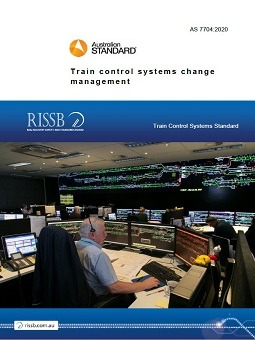The objective of this Standard is to describe the requirements to be applied by all rail organisations to ensure that safety risks associated with changes to railway train control systems (TCS) assets or systems are identified and eliminated or reduced so far as is reasonably practicable (SFAIRP).
This Standard provides the Australasian rail industry with a set of mandatory and recommended requirements for the management of change in TCS. It provides a framework for managing change that is consistent with AS 7717 and AS 7718.
This Standard is intended to be used by rail infrastructure managers, rail operators and suppliers of railway systems.
Management of change (MOC) is a methodology that is used as part of the risk assessment and control process. This Standard outlines the key actions under the MOC methodology along with matters that should be considered as part of the MOC process.
This Standard applies to all organisations who are responsible for safety under the Rail Safety National Law (RSNL) Act and Regulations. For the purpose of this Standard and to be consistent with the RSNL, all organisations are referred to as rail transport operators (RTO).
This Standard applies to proposed changes to both greenfield and brownfield sites.
The scope of this Standard includes:
- managing multiple changes on the one set of train control system infrastructure;
- Safeworking system selection;
- operational and technical requirements for changes and documenting operational performance of train control systems;
- testing requirements for different levels of changes;
- documentation requirements for changes including configuration management of the as-built system;
- transition requirements for change management of train control system infrastructure;
- collaboration with stakeholders;
- records of change management, design changes and commissioning records of the new/amended systems;
- rail user information of the changed systems as required for train drivers, safety personnel, rail protection officers, signaller/controllers, train operating organisations;
- consideration of future requirements;
- handover and maintenance;
- interface with internal and external infrastructure providers.




